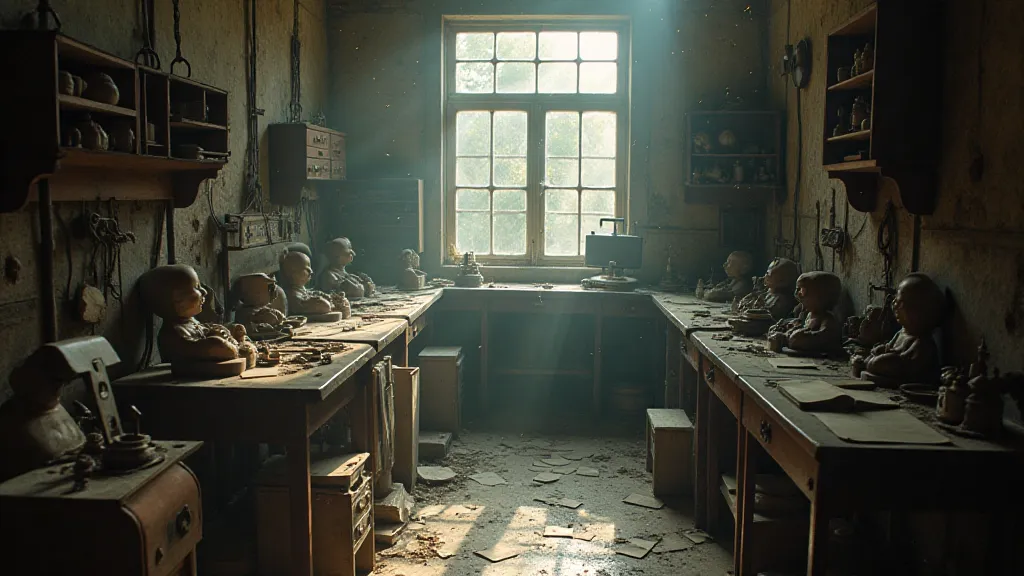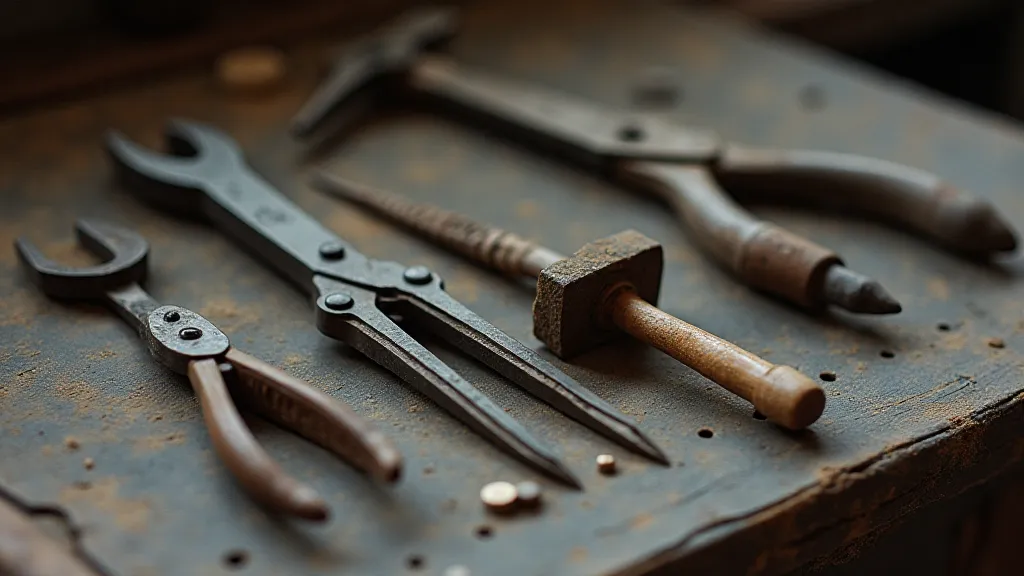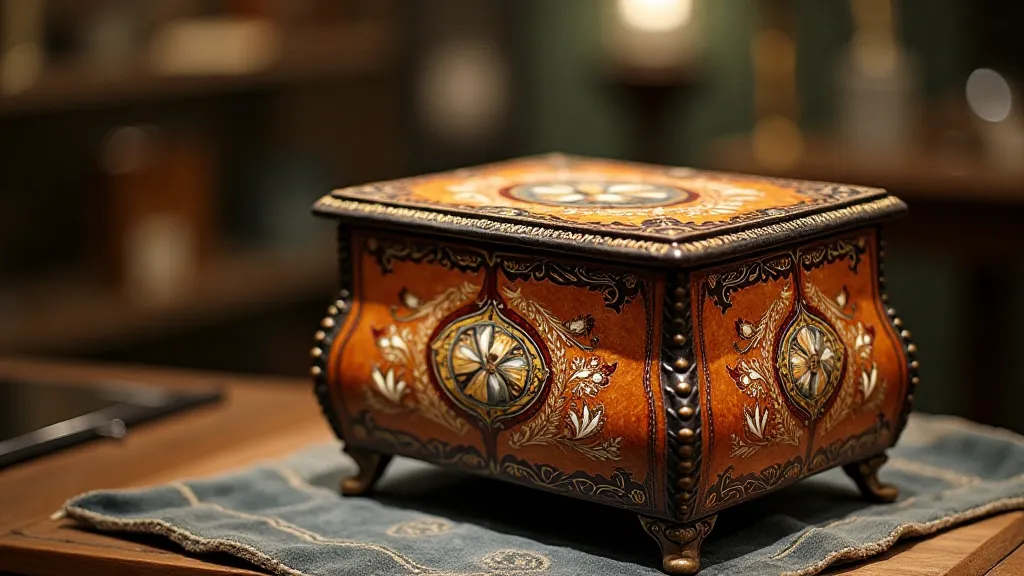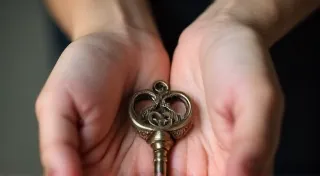Silent Springs: The Unspoken Stories Behind Abandoned Music Box Workshops
The quiet dust of abandoned workshops holds a certain melancholic beauty. Imagine walking through a space once filled with the delicate clatter of tiny hammers, the meticulous precision of hand-filing, and the faint scent of oiled wood and metal. These weren't factories churning out mass-produced goods; they were havens of artistry, dedicated to crafting miniature worlds of music. These were antique music box workshops, and many stand silent today, their springs frozen in time, telling stories of a lost era.
For those of us drawn to the allure of antique music boxes, it’s easy to appreciate the finished product – the enchanting melodies, the intricate movements, the sheer artistry on display. But less often considered is the world that brought these treasures into existence: the workshops themselves, filled with generations of skilled artisans. My own fascination began years ago, not with a particularly rare or valuable music box, but with a photograph I saw in a small antique shop – a black and white image of a man, surrounded by partially assembled music box movements, his face etched with a quiet determination. It sparked a curiosity that has since become a passion.

The Golden Age of Music Boxes: A Flourishing Craft
The late 19th and early 20th centuries represented a golden age for music boxes. The Industrial Revolution brought new technologies – improved steel production, precision machining – that made the creation of intricate mechanisms more accessible, and yet, many workshops stubbornly clung to traditional handcrafting techniques. Germany, Switzerland, and France were the epicenters of music box production, each with its distinct style and specialties. German workshops often excelled in complex movements and robust construction, while the Swiss were renowned for their delicate and nuanced sound, and the French for their artistry in decoration and finish.
The demand for music boxes was insatiable. They were not merely toys; they were status symbols, treasured gifts, and sophisticated forms of entertainment. Victorian parlors were filled with them, and music boxes graced the bedrooms of the wealthy. Families inherited them, cherished them, and passed them down through generations. The craft supported countless families, entire villages even, reliant on the steady rhythm of music box production.
The Cracks Appear: Economic and Technological Shifts
But the idyllic scene wasn't to last. The seeds of decline were sown by a confluence of economic and technological factors that gradually eroded the foundations of the music box industry. The First World War proved a brutal shock. Disruption of supply chains, labor shortages, and a general decline in consumer spending severely impacted production. Many smaller workshops, already operating on thin margins, were forced to close their doors permanently.
The post-war era saw a rise in cheaper, mass-produced alternatives. The advent of the gramophone and the radio irrevocably changed how people consumed music. Why spend a significant sum on a music box when you could listen to a wider range of music, played louder and more conveniently, for a fraction of the cost? The gramophone was the ‘Spotify’ of its time; it simply offered a more appealing proposition for most consumers. The hand-crafted music box, with its inherent limitations in volume and repertoire, began to look increasingly obsolete.
Technological advancements within the music box industry itself contributed to the decline. While precision machining initially facilitated production, it eventually paved the way for larger factories that prioritized quantity over quality. These factories often employed less skilled labor, leading to a decline in the overall craftsmanship. The focus shifted from artistry to efficiency, and the delicate artistry that had defined the golden age was lost.
The Human Cost: Lost Skills and Broken Traditions
The closure of these workshops wasn’t simply an economic event; it was a human tragedy. Generations of skilled artisans found themselves out of work, their specialized skills suddenly rendered useless. Many were reluctant to embrace new trades, clinging to the traditions passed down from their fathers and grandfathers. The knowledge and techniques – the nuances of tuning a comb, the art of hand-filing a pivot, the secret to achieving a perfect resonance – began to vanish, lost to time.

I’m fortunate to have spoken with a few former apprentices, men who spent their youth in these workshops. Their stories are heartbreaking, filled with nostalgia for a time when craftsmanship was valued above all else, and a profound sense of loss for the traditions that have disappeared. One old man, Herr Schmidt, described the camaraderie of the workshop, the shared passion for their craft, and the quiet satisfaction of creating something beautiful and enduring.
“We were more than just colleagues,” he told me, his voice raspy with age. “We were a family. We learned from each other, we supported each other. When the factory closed, it was like losing a part of ourselves.”
Preserving the Legacy: Collecting and Restoration
Today, the antique music box collecting community plays a vital role in preserving the legacy of these lost workshops. Collectors are not merely acquiring beautiful objects; they are custodians of history, safeguarding a unique aspect of cultural heritage. The demand for antique music boxes, particularly those from renowned workshops, continues to grow, driving prices upward and ensuring that these treasures are not forgotten.
Restoration, too, is a crucial aspect of preservation. Skilled restorers carefully repair and revive damaged music boxes, ensuring that their delicate mechanisms continue to function and their beauty is preserved for future generations. The challenge, however, is to balance restoration with authenticity. The goal is to repair and stabilize the music box while retaining as much of its original character as possible.
Understanding the history of these workshops – their location, their specialties, their unique characteristics – is essential for both collectors and restorers. Knowing the workshop from which a music box originated can significantly impact its value and inform the restoration process. Researching old catalogs, factory records, and even personal accounts can provide invaluable insights.

A Silent Melody, A Lasting Echo
The abandoned music box workshops stand as poignant reminders of a bygone era, a time when craftsmanship was celebrated, and artistry flourished. Their silence speaks volumes, telling a story of economic upheaval, technological advancement, and the enduring human spirit. By appreciating the beauty of antique music boxes, understanding their history, and supporting efforts to preserve them, we can ensure that the silent springs of these lost workshops continue to resonate, their melodies echoing through the years.





